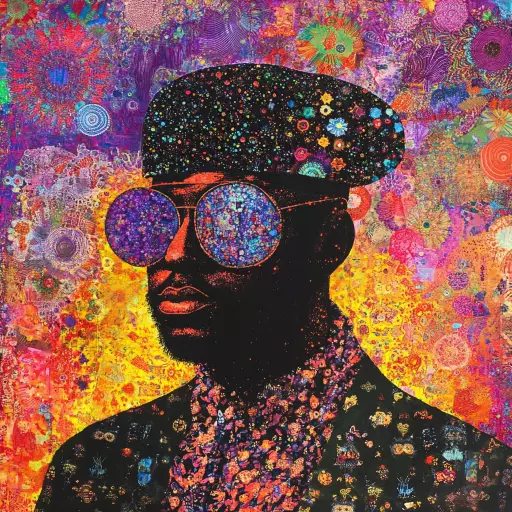Explore the Best AI Image Gallery

The AI Palette: Navigating the Ethical Landscape of AI-Generated Media
Artificial intelligence (AI) is rapidly transforming various facets of our lives, and the realm of media creation is no exception. AI-powered tools are now capable of generating stunning visuals, composing captivating music, and crafting compelling narratives, ushering in a new era of creative possibilities. While this technological advancement holds immense promise, it also raises a multitude of ethical considerations that demand careful examination.
The Creative Canvas Unleashed: Potential Uses of AI-Generated Media
AI-generated media has the potential to revolutionize numerous aspects of the creative industry:
- Content Creation Efficiency: AI can automate repetitive tasks, such as generating stock images or composing basic melodies, freeing up human creatives to focus on more complex and nuanced aspects of their work.
- Personalized Experiences: AI algorithms can tailor content to individual preferences, creating immersive and engaging experiences for users.
- Democratization of Creativity: AI tools can empower individuals with limited technical skills to express themselves creatively, fostering greater accessibility and inclusivity in the arts.
- Exploration of New Artistic Frontiers: AI can assist artists in pushing the boundaries of traditional mediums, generating novel concepts and forms of expression.
Ethical Crossroads: Challenges and Concerns
While the potential benefits of AI-generated media are undeniable, it is crucial to address the ethical challenges associated with this technology:
- Copyright and Ownership: Who owns the copyright to AI-generated content? Is it the creator of the AI algorithm, the user who inputs the prompts, or the AI itself?
- Bias and Discrimination: AI algorithms are trained on vast datasets, which may contain biases that reflect societal inequalities. This can result in AI-generated media perpetuating harmful stereotypes and discrimination.
- Misinformation and Deepfakes: The ability to generate highly realistic synthetic media raises concerns about the potential for misuse, such as creating convincing deepfakes for propaganda or disinformation purposes.
- Job Displacement: AI-powered tools may automate certain creative tasks, leading to job losses in the creative industry.
Navigating the Future: Ethical Guidelines and Responsible Development
To harness the power of AI-generated media while mitigating its potential risks, it is essential to establish ethical guidelines and promote responsible development practices:
- Transparency and Explainability: AI algorithms should be transparent and their decision-making processes understandable to humans.
- Data Governance and Bias Mitigation: Efforts should be made to ensure that AI training datasets are diverse, representative, and free from biases.
- Human Oversight and Control: Humans should retain ultimate control over the creative process, using AI as a tool to augment their abilities rather than replace them entirely.
- Education and Awareness: Raising public awareness about the capabilities and limitations of AI-generated media is crucial for informed decision-making.
Conclusion
AI-generated media presents both exciting opportunities and complex ethical challenges. By embracing a thoughtful and responsible approach, we can harness the transformative power of this technology while safeguarding the integrity and value of human creativity.






](https://images.ai-img.art/thumbnails/150/45237dfa7845159b860f9e234c48c4418e8efcb52b4d15da4493f46e6a99f337.webp)






](https://images.ai-img.art/thumbnails/150/6a9bb97a3f1c45ab616724cc54bca010cbcc2d658a9c0e4581aa181c88046444.webp)









](https://images.ai-img.art/thumbnails/150/6a577517a359cd2bc6212d6b0f12c7cab660841317023550a76c84f409c7f2d0.webp)






](https://images.ai-img.art/thumbnails/150/065f0b2e150f4cc43a9da80d822e8a385e9e50f2f6ff2cc3be7639cfd74952da.webp)














](https://images.ai-img.art/thumbnails/150/1b14bd827b740aca3b0d8efa7ed6865e28c7c8382172f3f565c96b6c5f64ca78.webp)



